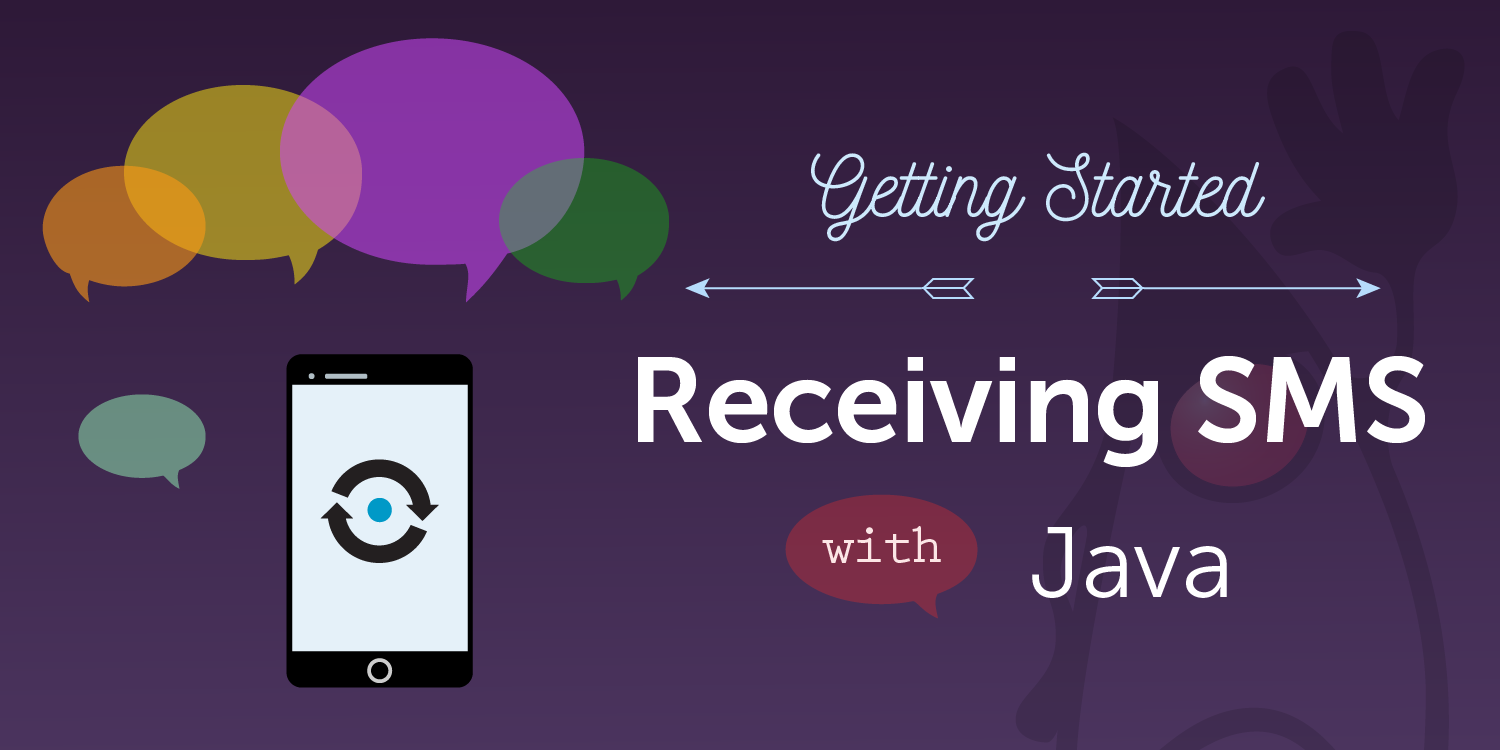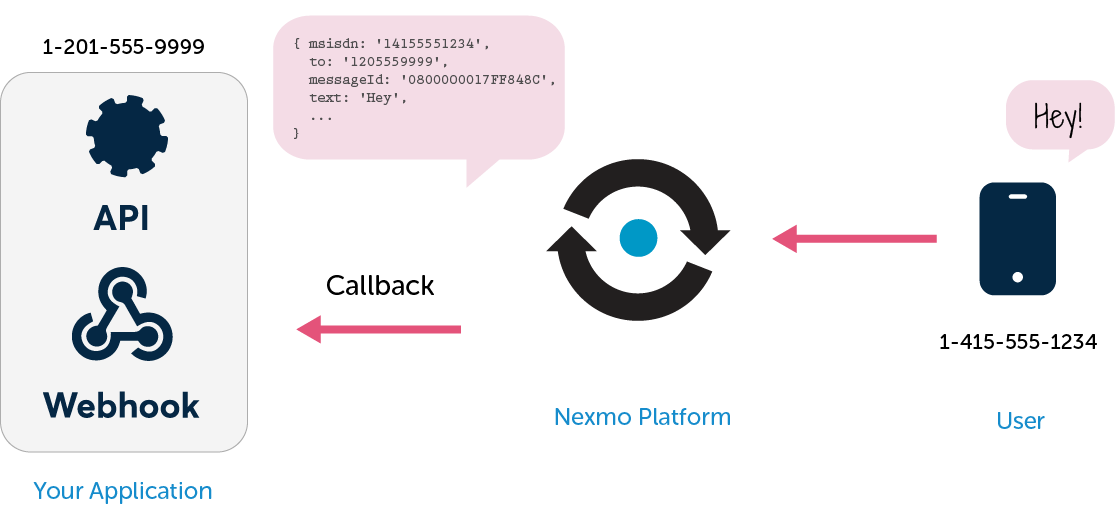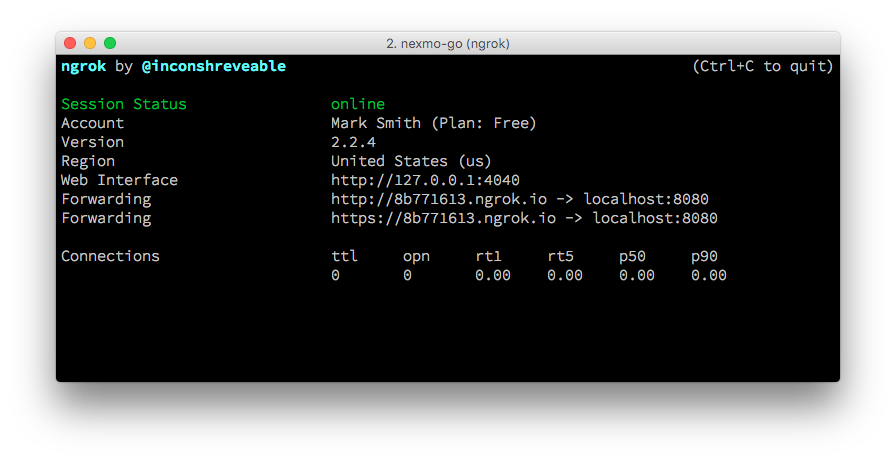
How to Receive SMS Messages with Java
In the last tutorial, we set up a Java web app that can send SMS messages using Vonage SMS API. This tutorial builds on that, adding an endpoint that will be called by Vonage when someone sends an SMS message to your Vonage number.
How Does It Work?
When Vonage receives an SMS message on a Vonage number, it looks up the webhook endpoint (URL) associated with that number and calls that URL with a big blob of JSON describing the message that was just received.

What we're going to do in this tutorial is write a Servlet that can handle the incoming SMS message. The problem is that while we're developing on our local machine, we are likely to be firewalled from the internet, so Vonage's servers can't reach us! One way around this would be to continuously deploy to a public web server, but that is a complete pain. Fortunately there is an excellent tool called Ngrok that can help us with this problem.
Developing Webhooks With Ngrok
When you run Ngrok, it creates a new subdomain of ngrok.io, and then it tunnels all requests to that domain name to a web service running on your machine. Handy!
So go install Ngrok (I'll wait here). Once you've done that, run ngrok in your terminal:
ngrok http 8080
Jetty uses the 8080 port by default, so we'll use that to make life easier. You can see from the screenshot that Ngrok has allocated me the random URL http://8b771613.ngrok.io, which is now tunneling to localhost:8080, where I'll be running Jetty in a moment.

Leave Ngrok running in a terminal window (it'll happily run until you shut it down), and we want to keep the URL and tunnel running for a while. What we'd like to do now is to configure Vonage to point to our Ngrok URL, but it won't do so unless the URL is returning 200 messages. So we need to write a small stub servlet first.
A Servlet To Receive The SMS Message
In `src/main/java/getstarted/InboundSMSServlet.java', paste the following:
package getstarted;
import javax.servlet.*;
import javax.servlet.http.*;
import java.util.Collections;
public class InboundSMSServlet extends HttpServlet {
@Override
protected void service(HttpServletRequest req,
HttpServletResponse resp)
throws ServletException,
java.io.IOException {
System.out.println("Received: " + req.getMethod());
for (String param : Collections.list(req.getParameterNames())) {
String value = req.getParameter(param);
System.out.println(param + ": " + value);
}
}
}
All the Servlet does is to print the received parameters to the console--useful for debugging! Now configure your web.xml with the following:
<servlet>
<servlet-name>inbound-sms</servlet-name>
<servlet-class>getstarted.InboundSMSServlet</servlet-class>
</servlet>
<servlet-mapping>
<servlet-name>send-sms</servlet-name>
<url-pattern>/send</url-pattern>
</servlet-mapping>
<servlet-mapping>
<servlet-name>inbound-sms</servlet-name>
<url-pattern>/inbound</url-pattern>
</servlet-mapping>
Note that I've reconfigured the send-sms mapping so the url-pattern is now /send instead of the wildcard mapping it was before. Now if you run gradle appRun, Jetty should start up and you're ready to configure your Vonage web-hook.
Configure Vonage To Call Your Webhook
Sign into your Vonage account and go to Your Numbers. Find the number you want to configure, hit 'Edit' and then enter the ngrok URL with /YOUR_PROJECT_NAME/inbound at the end.
Now, if you send a text message to the number, you should see some lines printed on your console:
Received: GET
messageId: 0B0000004A2D09D9
to: 447520615146
text: Hello Nexmo!
msisdn: 447720123123
type: text
keyword: HELLO
message-timestamp: 2017-04-27 14:41:32
And That's It!
So now you can receive SMS messages! At the moment, all we're doing is printing them out to the console. It's often useful to store them in a database of some kind, but you can do anything you want with them now: build a Slack bot to post them to your Slack channel; pass them through Google Translate and then forward the messages to your phone; forward them to Twitter? The possibilities are endless!
Documentation Links
The following documentation links will be useful for working with SMS messages: